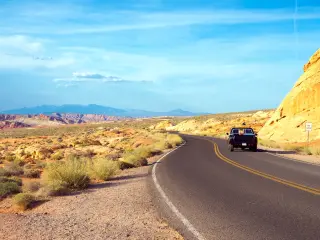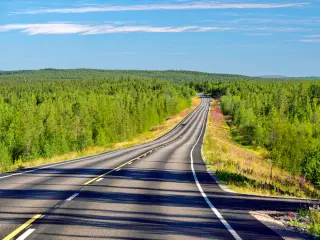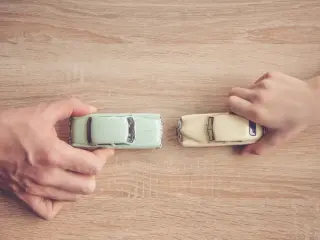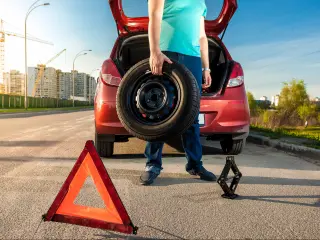How often should you stop on a road trip?
As tempting as it is on a road trip to stay behind the wheel for those extra few hours in order to get to your destination as quickly as possible, driving for long stretches of time without a break can be really dangerous.
Driving takes a lot of concentration, skill, and control that is difficult to maintain for hours on end, making frequent stops invaluable to maintaining a high quality of safe, efficient driving.
As a general rule, it's best to take a break of at least 15 minutes every two hours, and to not drive for more than eight hours in a day, to ensure you stay alert and avoid the associated risks of driving for too long without a rest. These risks include falling asleep at the wheel, running out of fuel, and reduced reaction times.
Although it sounds like a major delay to your journey, regular, short breaks are actually only likely to add an hour tops to your trip, and if you schedule them before you set off, it shouldn't be a hindrance at all.
To help you get to grips with why this topic is so important to anyone facing a long drive, we've put together a guide to take you through how often you should stop on a road trip, reasons why some might need to stop more often than others, and the potential risks of not stopping.

Reasons you may need to stop more often
Although we strongly recommend every driver listens to the 15-minute-break-every-two-hours rule, it's also good to be aware of your own circumstances which might mean you need to stop a little more often.
Everyone is different and it's important to listen to your own body and respect the needs of your passengers to make the ride as pleasant and as safe as possible.
Here are a few reasons why you might consider stopping a couple of extra times along the way:
If you're driving at night
Our internal body clocks are naturally programmed to expect sleep during the night, so it's no secret that driving after sundown can be a lot trickier than cruising at midday.
Increased tiredness can, obviously, have really bad implications when it comes to driving (which we'll get to a little later on), so expect to have to stop more frequently to ensure you stay alert enough to continue travelling.
Lots of breaks filled with cups of coffee and fresh air can help to keep you going, and 20-minute naps are a great quick-fix to give you a new burst of energy.
But remember: it's much better to admit defeat and book a hotel room for the night if you're feeling too sleepy to carry on - you can always make up the miles in the daylight once you've had a good rest.

If you're taking medication that can cause drowsiness
Don't be fooled by the fact that you can buy them over the counter; even run-of-the-mill medications like hay-fever tablets and some painkillers can cause drowsiness that may affect your ability to drive.
Where drowsiness equals a loss of concentration, it's best to take more frequent stops to make sure you stay alert, or hand the driving over to someone else if you can to be extra safe.
Always check the precautions printed on the packet, which should let you know whether you're safe to drive and for how long.
If you've eaten a big meal before setting off
Although we're all in favour of copious amounts of (healthy) road trip snacks, eating a big meal before driving is not a good idea if you want to stay on the road for a long time.
As we've all experienced from that post-Christmas dinner slump, big, hearty meals can render you sleepy and sluggish, making it pretty difficult to concentrate on the road.
You'll probably find extra stops are needed on top of your two-hour intervals if you're driving on a very full stomach, not only to make sure you stay on the ball, but to stretch your legs and get some air (it's not fun sitting still in a car when you're full of Christmas turkey).
If you're travelling with pets or young children
Both pets and children are a little more demanding when it comes to the number of breaks they need, so expect to have to stop more frequently if you're travelling with a little one or a furry friend.
The risks of driving long distances without a break
The guidelines of stopping regularly are there for a reason, regardless of whether you feel like you need to or not, and there could be pretty severe consequences if you choose to ignore them.
Here are a few of the risks of driving long distances without a break that we think you should be aware of:
You'll run the risk of falling asleep at the wheel
We know what you're thinking - that you'd never fall asleep at the wheel, that you can easily control yourself and stay awake, and that even though you've been driving for two hours already you can definitely last two more to get to your destination.
Although we admire the positivity, in reality the urge to sleep is actually a lot stronger than you think, and it's easier than it seems to nod off without even realising it.
It's so important, therefore, to take those stops at two-hour intervals to get some fresh air, break your driving concentration, and have a coffee to boost your energy levels so that you get back into the car refreshed and ready for the next stretch.
Without these breaks, you're at a much higher risk of falling asleep and causing serious harm to both yourself and your fellow passengers, so it's best to elongate your journey a little to stay as safe as possible.
You'll start to have slower reaction times
This ties in with the above point about getting sleepy at the wheel - the longer you drive without a break, the less concentration you'll be able to maintain, which will decrease your ability to react quickly to what's going on around you.
This is particularly dangerous on the motorway, where you're driving at high speeds and you only have seconds to respond to a car braking suddenly or someone switching lanes without warning.
This will dramatically increase your chances of being involved in an accident, endangering both the passengers in your car and in other vehicles driving alongside you.
Again, you need the breaks to help you maintain the appropriate level of concentration in manageable 2-hour stretches, that will make your driving a whole lot safer.
You could risk running out of fuel
We know this sounds like a bit of a ridiculous point to include (all you have to do is keep an eye on the fuel dial, right?), but it's actually more common than you think for people to get really carried away trying to cover hundreds of miles and completely forget that they need to refuel.
Due to the fact that you'll be starting to get tired and lose your focus after two hours, it's easy to channel all your energy into the actual driving and allow the fuel levels to plummet unnoticed.
With regular stops, not only will you be more on the ball, but you'll also probably be stopping somewhere that has a pump where you can fill up, both reminding you to be aware of it and giving you a chance to top up.
Scheduling your fuel stops also ensures that you get enough breaks and that you don't run out of petrol - a simple yet effective way to rest regularly.
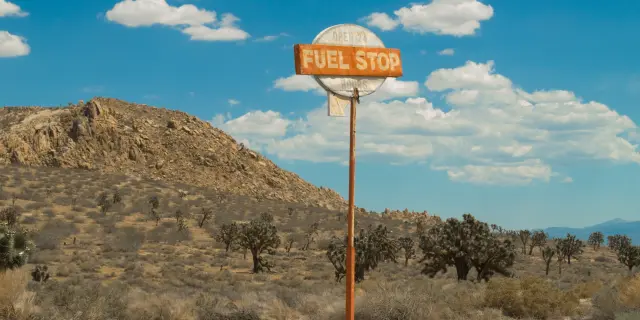
Stopping every two hours is, then, one of the most important pieces of road trip advice we can offer you to make sure you safely make it from A to B.
By listening to your needs as well as those of your passengers,' as well as official advice, there's no reason why you shouldn't have an enjoyable journey that you can fill with road trip games and epic playlists without worrying about losing focus.

